
In this article, you will learn everything you need to know about long-tail keywords and 8 unique techniques on how you can find them, keep watching!
Searching for long-tail keywords is a big part of the SEO keywords process and you should include them within your keyword research strategy to drive high volume and quality traffic to your website regardless you are a small or large site.
But before I’ll show you how you can find long-tail keywords, let’s start with the basics:
What are Long-Tail Keywords?
Long-tail keywords are longer and more specific keywords or keyphrases of a head term keyword. And because Long-tail keywords are more specific, they often get less traffic, however, they get a higher quality of traffic which resulting in better conversion rates and more sales than head term keywords.
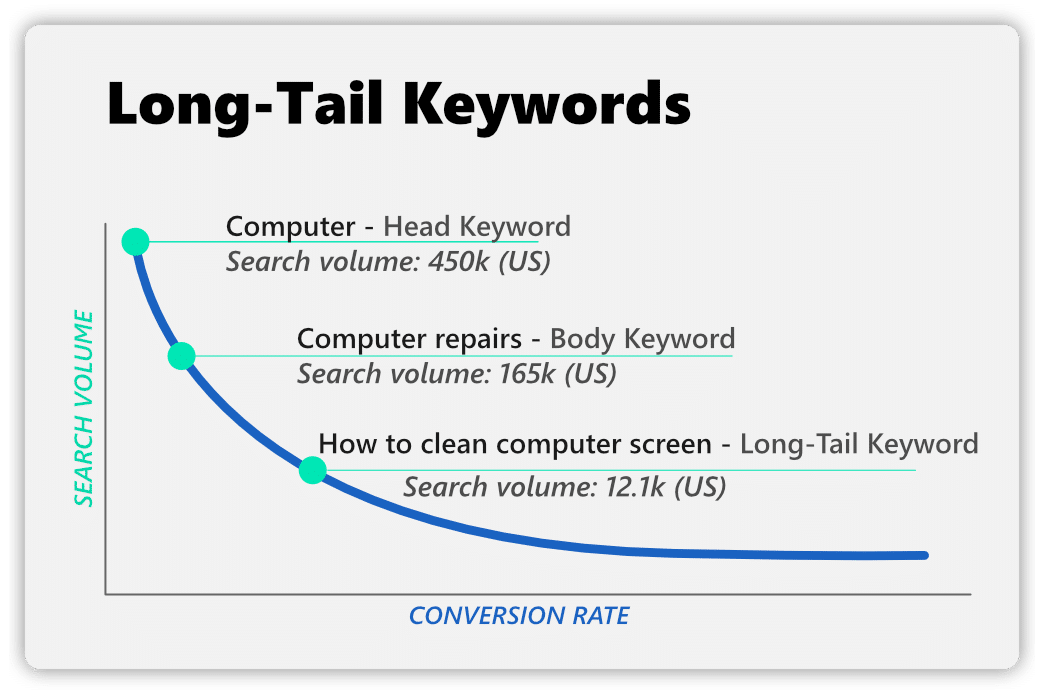
To explain it better, let’s first discuss the three different types of keywords. As you can see keywords are generally divided into 3 different categories:
- Head Keywords: Are popular, short-tail keywords often with high traffic, low conversions, and being very competitive. These keywords are also very broad making it even harder to establish topic relevancy as there are many topics to be targeted.
- Body Keywords: Body keywords are more narrow keywords/topics of the head keyword with lower search volume, but better conversion rate. These keywords are typically great for topic clusters and focusing on creating topical relevance for SEO.
- Long-Tail Keywords: Are keywords these are very specific keywords with clear intent from the searcher. Generally, long-tail keywords contain three and more words, have less search volume, and have higher conversion rates.
Based on these categories I will teach you how you can recognize head, body, and long-tail keywords from each other and how you can use this knowledge to increase your organic traffic and sales from your website.
And in this article, we will deep dive into long-tail keywords, how you can find them and what are the long-tail keywords best practices that you should apply to your website.
Why Do You Need Long-Tail Keywords?
There are many reasons why you should be targeting long-tail keywords and I will not tell you every single one of them, however, let me tell you the most important reasons why I think long-tail keywords should be part of your overall keyword research strategy.
Reason #1: Establish Topical Relevance
The main reason why you should focus on long-tail keywords above all is that they help you to establish topical relevance for your website.
Based on HubSpot’s concept of Topic Clusters, you should be focusing on finding topics that are very close to your business and then creating as much content around the topic to establish topical relevance and own the topic in the search.
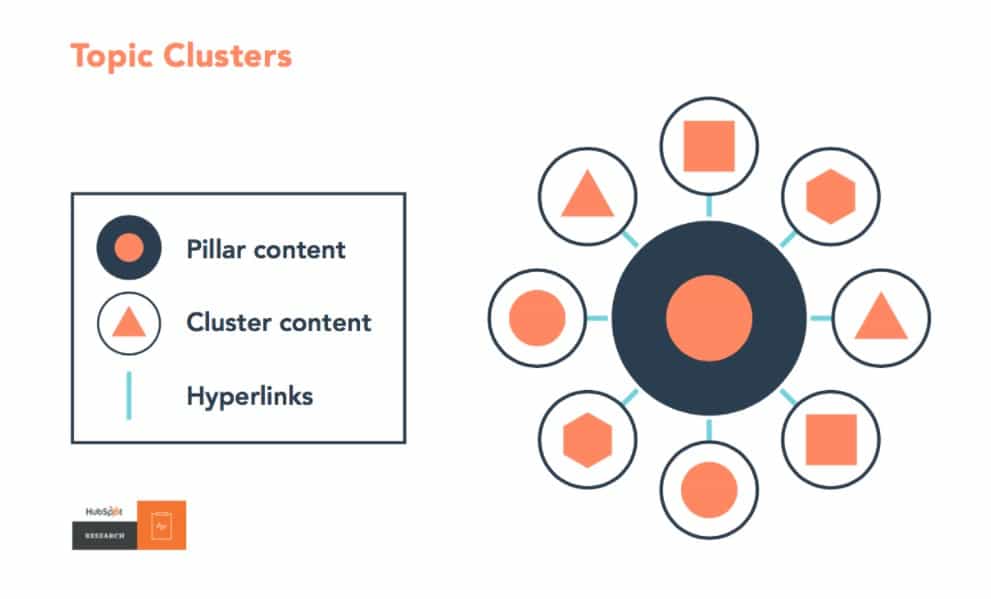
Owning a topic means, your website appears for most of the related keywords around your targeted topic in the top positions in the SERPs.
So, creating topical relevance will help you to send a strong signal to Google that you are a subject matter expert within your targeted topics and your niche, which ultimately will help you to build your Google E-A-T score and improve your ranking for the overall topic and subtopics.
For example, let’s say you are a marketing agency and one of your closely related topics is “content marketing” because you are providing content marketing services.
Now, based on HubSpot’s concept you must create as much content around the topic “Content Marketing” to be able to own this topic in the search.
The topic “Content Marketing” is your body keyword, “content” is the head term, which is the keyword with very broad meaning and the long-tail keyword could be “content marketing plan”.
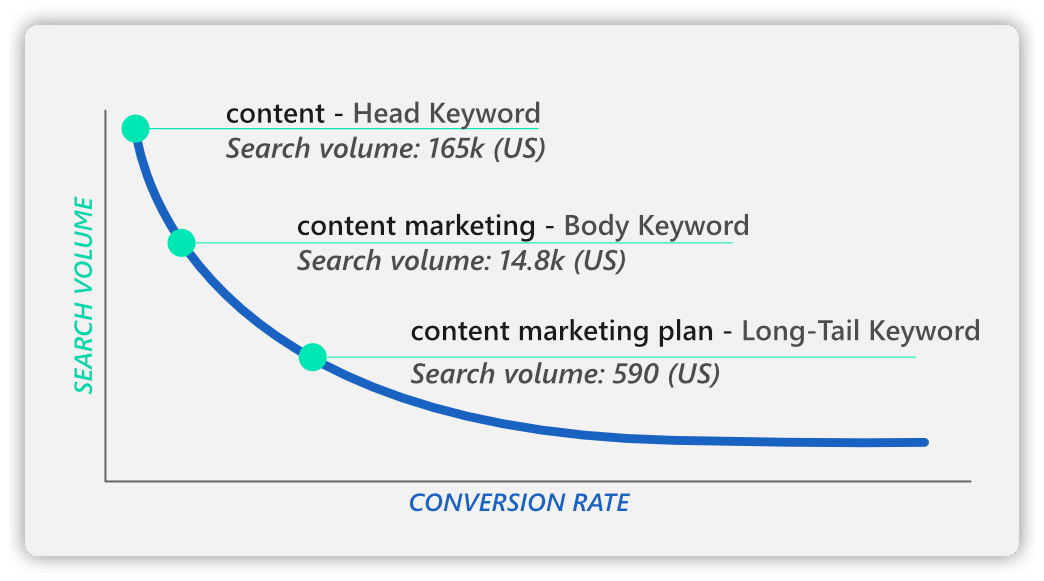
So, based on this if you want to own the topic “content marketing” and follow the Topic Cluster model, then you need to find as many long-tail keywords to create topical relevance and improve your ranking.
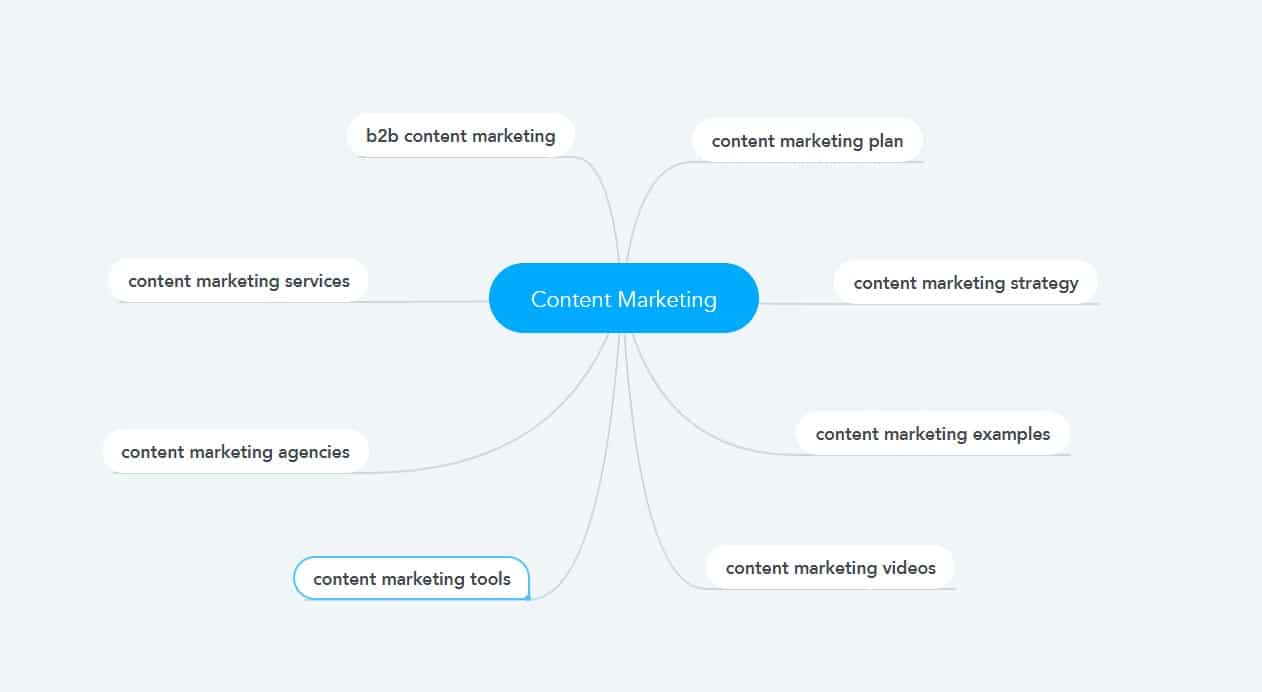
Reason #2: Boost Your Conversion Rates
The next and one of the most exciting parts of targeting long-tail keywords is that it improves your conversion rates.
With studies and numerous claims published, long-tail keywords supposedly improve organic conversion rates.
And while I couldn’t find any current and not outdated information to prove this point I know from my own experience that long-tail keywords in fact do convert much better than body or head keywords.
So, why do long-tail keywords convert better?
The reason is simple, long-tail keywords are more specific and the searcher who is typing the keyword has a much clear idea of what he wants.
Just let’s take the keyword “content marketing”. This could mean many different things to a person who searches for this keyword. They could be searching for what is it, why you need it, how to use it, tips or tricks, and more. The intent is unclear and most likely searcher is not close to making a purchase decision or even in the consideration stage.
However, keywords like “content marketing agency” is more specific and it has much clearer intent, the user is searching for an agency to manage his content strategy and he is much closer to make a purchasing decision.
Therefore, long-tail keywords can be the most profitable keywords out there. And as I said from my experience, most of the b2b sales leads or sales my clients generate are 80% from a few long-tail keywords that are very closely related to their products or services.
Reason #3: Drive More Traffic
And the last reason I want to mention is that it helps you to drive more traffic to your website especially if you are starting a new website.
Long-tail keywords are often less competitive than their body or head keywords. As you can see from our list of long-tail keywords from the previous example, the long-tail keywords have significantly lower “Keyword Difficulty” according to SE Ranking than the body keyword “Content Marketing”.
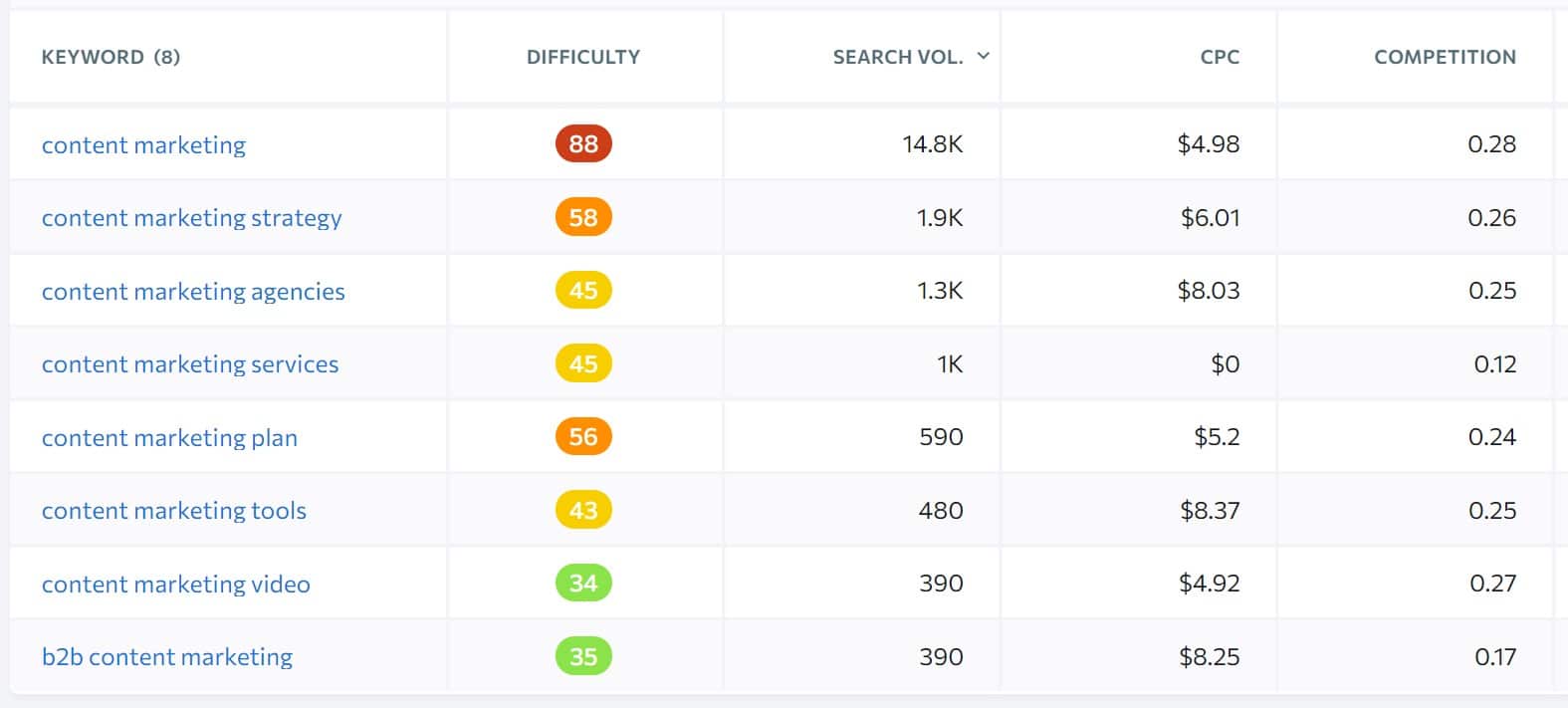
Thus, this gives you the opportunity to drive traffic to your website without doing too much link building to increase your domain authority.
However, even if you are a large site, with high domain authority, you still want to target long-tail keywords as most of the targetable keywords are actually long-tail keywords. And what I mean targetable keywords are keywords with monthly search volume higher than 10.
So, you would run out of keywords ideas to target pretty quickly if you would only target head keywords and body keywords. And I am not even mentioning it is impossible to build topic relevancy for you to target head and body keywords.
Therefore, most of the time you will be actually targeting long-tail keywords and they probably will drive you most of your traffic!
How to Find Long-Tail Keywords?
So now when you understand what long-tail keywords are and why you need them, let me show you 8 favorite ways to find long-tail keywords:
Technique #1: Analyze Your Body Keywords
The first and probably the most common technique to find long-tail keywords is to analyze your targeted body keyword or topic you want to own if you may.
So, let me show you exactly how I found the long-tail keyword ideas for the body keyword “content marketing”.
First, I fire up SE Ranking Keyword Research tool, enter the body keyword, select my targeted location, and hit “Analyze”.
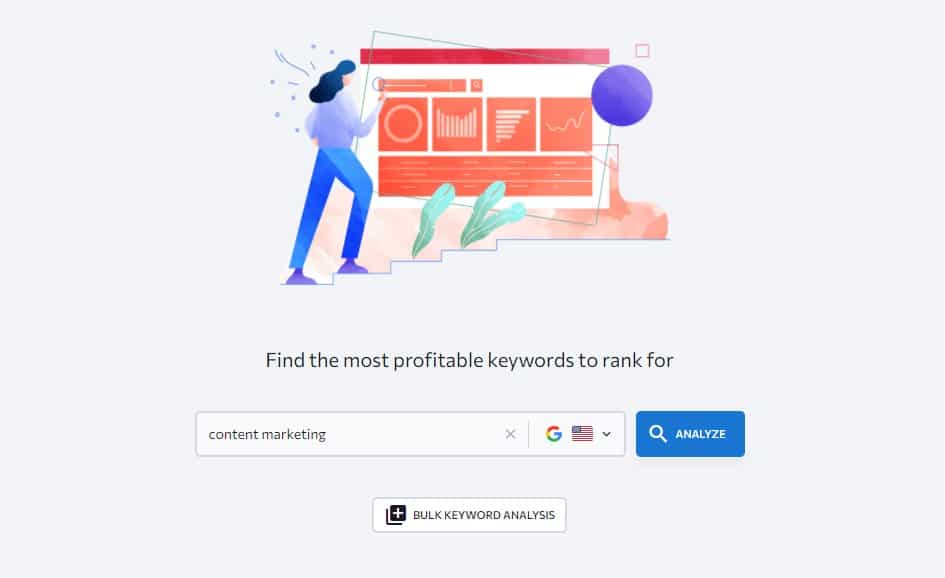
Here I will get helpful information about the analyzed keywords such as the keyword difficulty, search volume, and CPC. Now I will select any of the two keyword ideas report.

This will give me a list of keyword ideas that are similar or related to my analyzed body keyword. Here, I just need to scan the list of keywords to find long-tail keywords that I have already showed you before from the Topic Cluster example.

Also, as you can see, I get a high-level overview for each keyword that helps me to decide whether it makes sense to target the keyword or not.
Of course, you can do this with almost any keyword research tool available. This is an easy strategy to find long-tail keywords, however also used by many specialists. But if you only care about establishing topic relevancy, then this technique is for you.
Technique #2: Check to Answer the Public Website
The next technique where you can find long-tail keywords, specifically question-based keywords is by using the website answerthepublic.com.
Here you just enter your head keyword or body keyword, select your location and click on search.

And here you will get plenty of suggestions for long-tail keywords for your analyzed keyword.

However, I do recommend you also check out the search volume of those keywords you want to target to ensure it can drive you traffic if you are going to target the long-tail keyword with a specific piece of content.

Technique #3: Check Out Forums
Another way to find long-tail keywords is to check out forum websites such as Quora, Reddit, or any niche forum websites you know.

Especially if you are an active member, then you might have access to close-door communities where good ideas and long-tail keywords might appear quite often.
I especially recommend you look out for any trends within your niche that are just coming out that you can write about. This often helps you to be the first to have content for the trend which means your content can rank first and drive a lot of traffic to your website.
Technique #4: Analyze Your Competitors
Another great way to find long-tail keywords is to analyze your competitor’s website and their ranking pages.
Your competitors can be one of the best sources of keyword ideas and you should be regularly conducting SEO competitor analysis to find out what is working for them and then replicate it for your own website.
And that also applies to finding long-tail keywords. Let me show you.
First, I open up my SE Ranking Competitive Research tool, then enter my competitor domain, select my location and click on “Analyze”.

Here I will get a high-level overview of my competitor domain such as their organic and paid traffic, domain trust, total traffic cost, and their ranking keywords. So let’s open up the keyword report.

And here I will get my competitors’ organic keyword list. So now I only have to scan the list to find any long-tail keywords that I can target with a dedicated piece of content such as the long-tail keyword “how to get more youtube subscribers”.

Also, if your competitor knows a thing or two about SEO then you can check their “Pages” report and check out their URL structure. Typically, they will include their targeted keyword within the SEO URL.
For example, on my competitor domain, you can see the targeted keyword right within their URL and even how much traffic the long-tail keyword and its variants are getting.
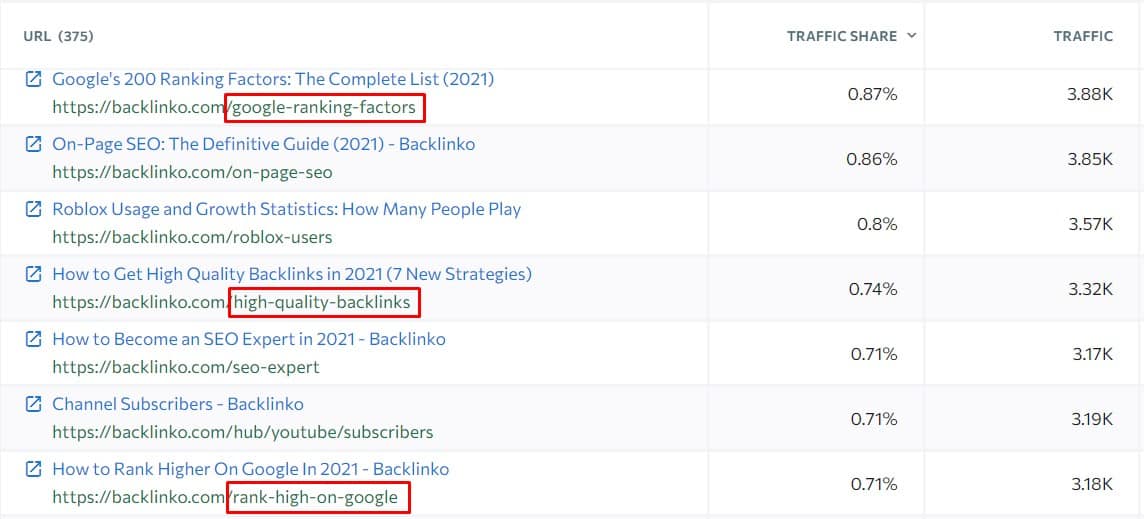
So, like this, you can make a long list of keywords and then analyze them to see whether they are worth targeting.

Technique #5: Analyze Your Ranking Keywords
Another technique to find long-tail keywords and one of my favorites that helps me quickly to improve my overall ranking.
There are two ways to find your ranking keywords depending on the size of your website.
The first and free way is to use Google Search Console where you will get your top 1,000 ranking keywords.

The advantage of this method is that you will get an accurate number of your keyword impressions, ranking, traffic, and CTR from Google.
Also, if you are already ranking for the keyword in Google search it means Google has acknowledged your website, so if you create dedicated content for the long-tail keyword, you most likely will boost your ranking position and improve your overall ranking in Google Search.

However, if you are ranking for more than 1,000 keywords and getting more than 1,000 impressions for your lowest impression keywords, then you need to use the second method to analyze all your keywords.

Basically, this is similar to the Competitor Analysis technique, but instead of analyzing your competitor domain, you will analyze your domain organic keywords using SEO tools.

Honestly, I do prefer using SEO tools to analyze my keywords despite there will be some inaccuracies, but often I can get a better picture of my ranking keywords and which one I should improve first and which can still wait.
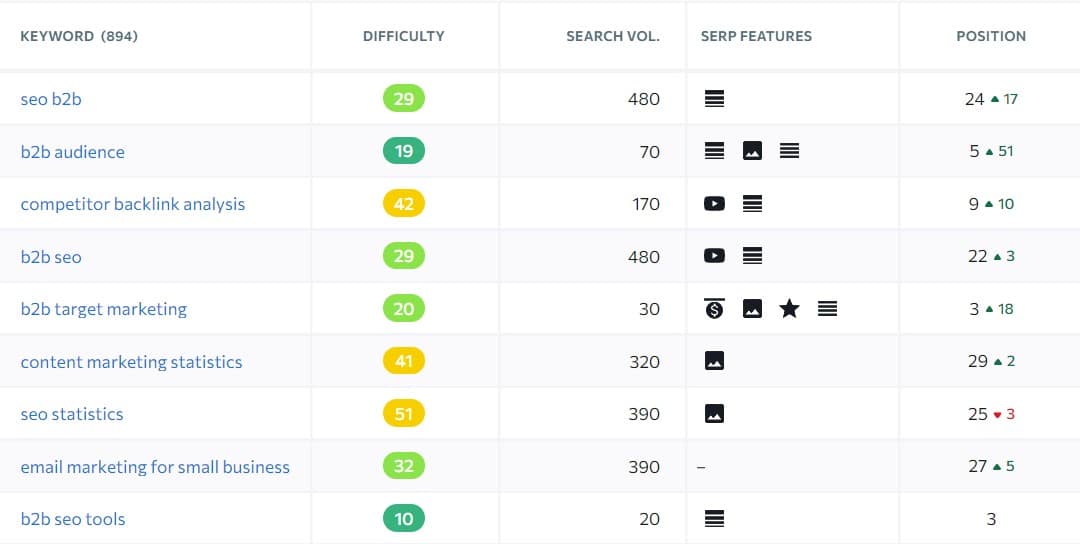
Definitely analyzing your own ranking keyword list is a great source of long-tail keyword ideas and they can drastically improve your overall ranking in SERPs helping you drive more organic traffic to your website.
Technique #6: Check Out Google Trends
Technique #6 is not much about finding long-tail keywords as much as about analyzing long-tail keywords that you have found and their trends.
It will help you to determine the potential of the keyword in the long run and whether the keyword is growing or falling.
Just like when you are analyzing company stock which one to buy and hold for the long-term, you want to see the long-tail keyword has the long-term potential to bring you traffic and in the best case the keyword search demands continually grow over time.
With that, let me show you how this technique works:
Let’s say I am in the technology business and I am selling software like Business Intelligence, Enterprise Resource Planning System (ERP), and Big Data Analytics.
And with the marketing team, I am preparing our yearly marketing plan for next year and I want to see, what applications are popular among the people.
So, I open up Google Trends pop in my keyword “Business Intelligence” to see if people are interested in this kind of software.

And clearly, this topic has been going upwards and becoming more trendy over the past 5 years. This gives me a good idea that people in the United States are more interested in Business Intelligence software.
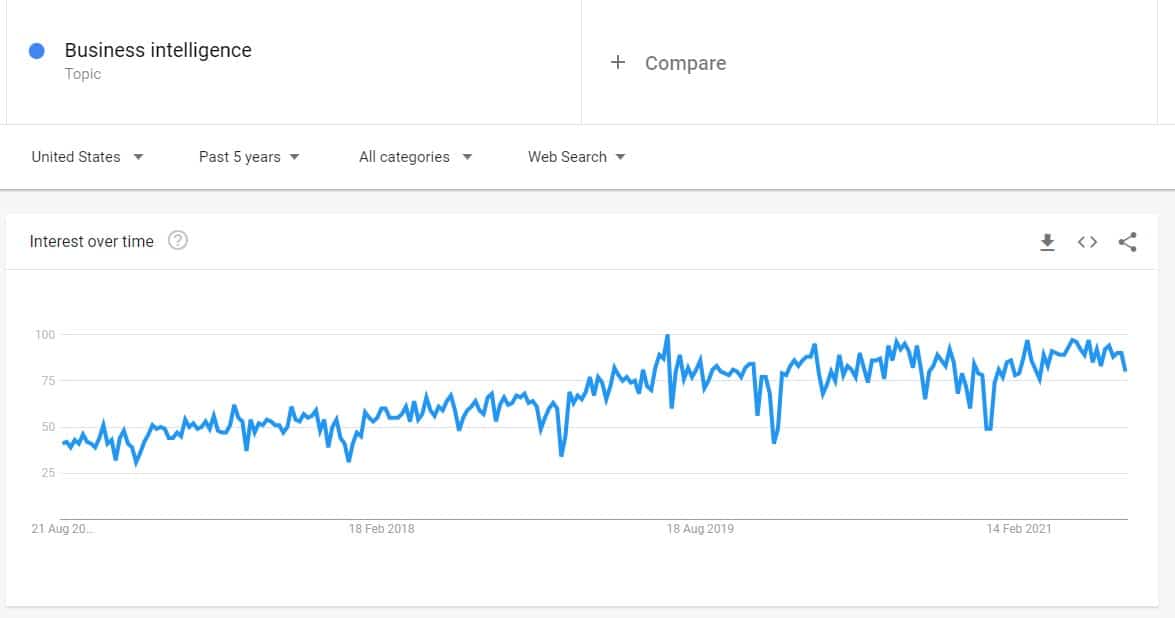
And that same applies to my other long-tail keyword “Enterprise Resource Planning”. The trend is growing as well, however, it’s not as steep as the first topic.
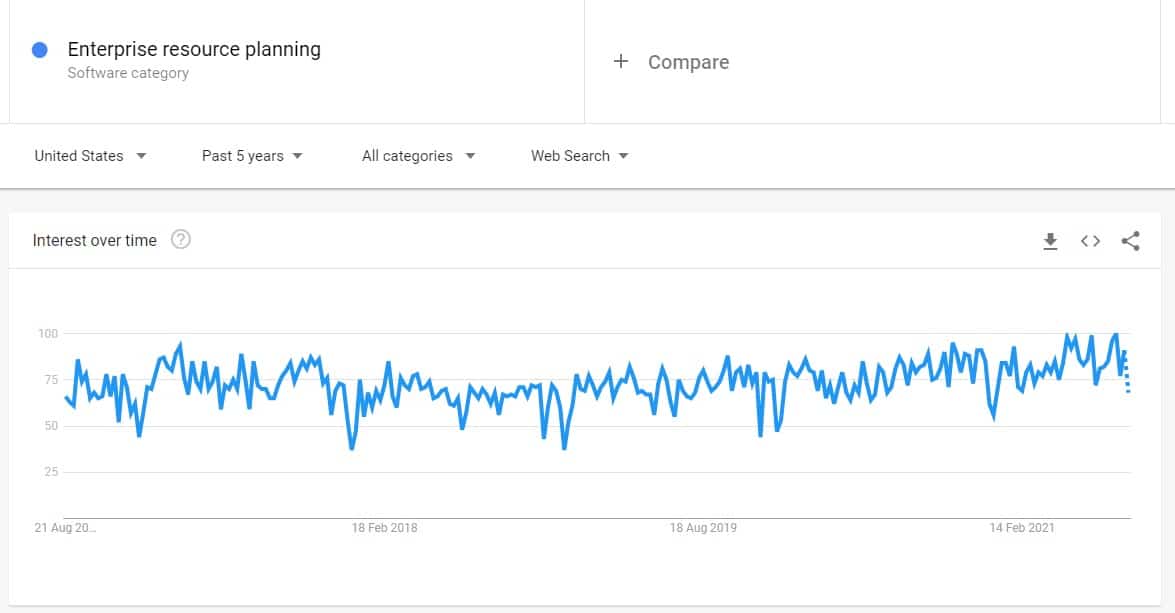
But then when I analyze the topic “Big Data”, it shows me that people are less interested in such things over time.
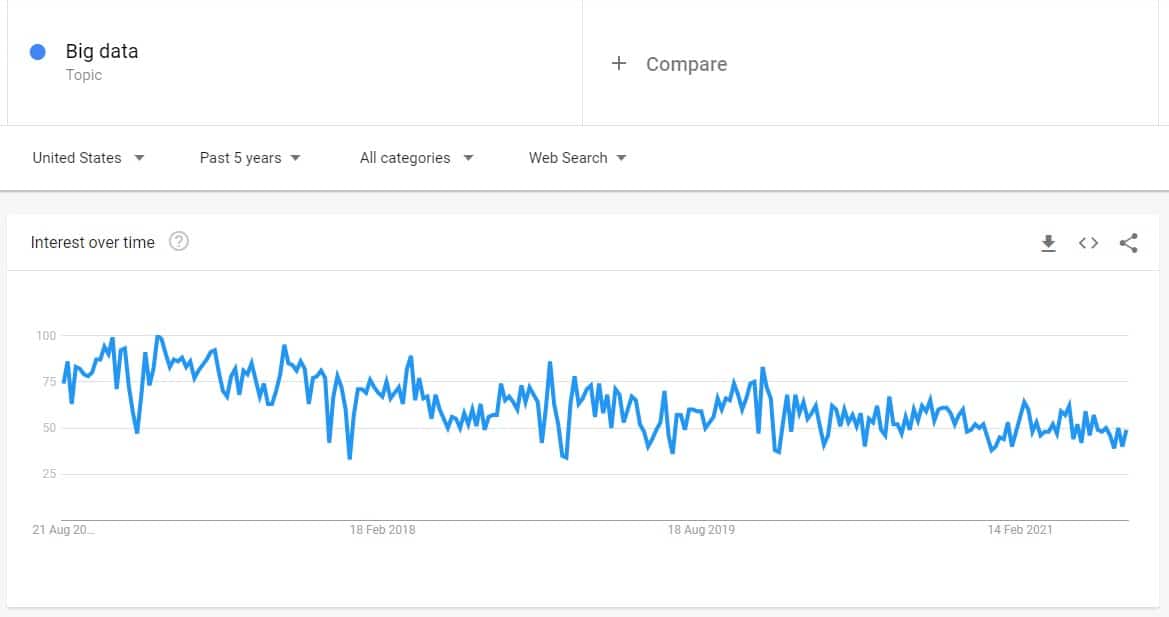
This gives me an idea, that my marketing should be more focusing on Business Intelligence and ERP software rather than Big Data.
However, this is just one step in many to do research and analyze keyword potential, but an important indicator of how people search your targeted keywords.
Technique #7: Check Out Exploding Topics
Another way to find long-tail keywords is to use ExplodingTopics.com.
Similarly, to Google Trends, Exploding Topics shows you the trends of certain topics.
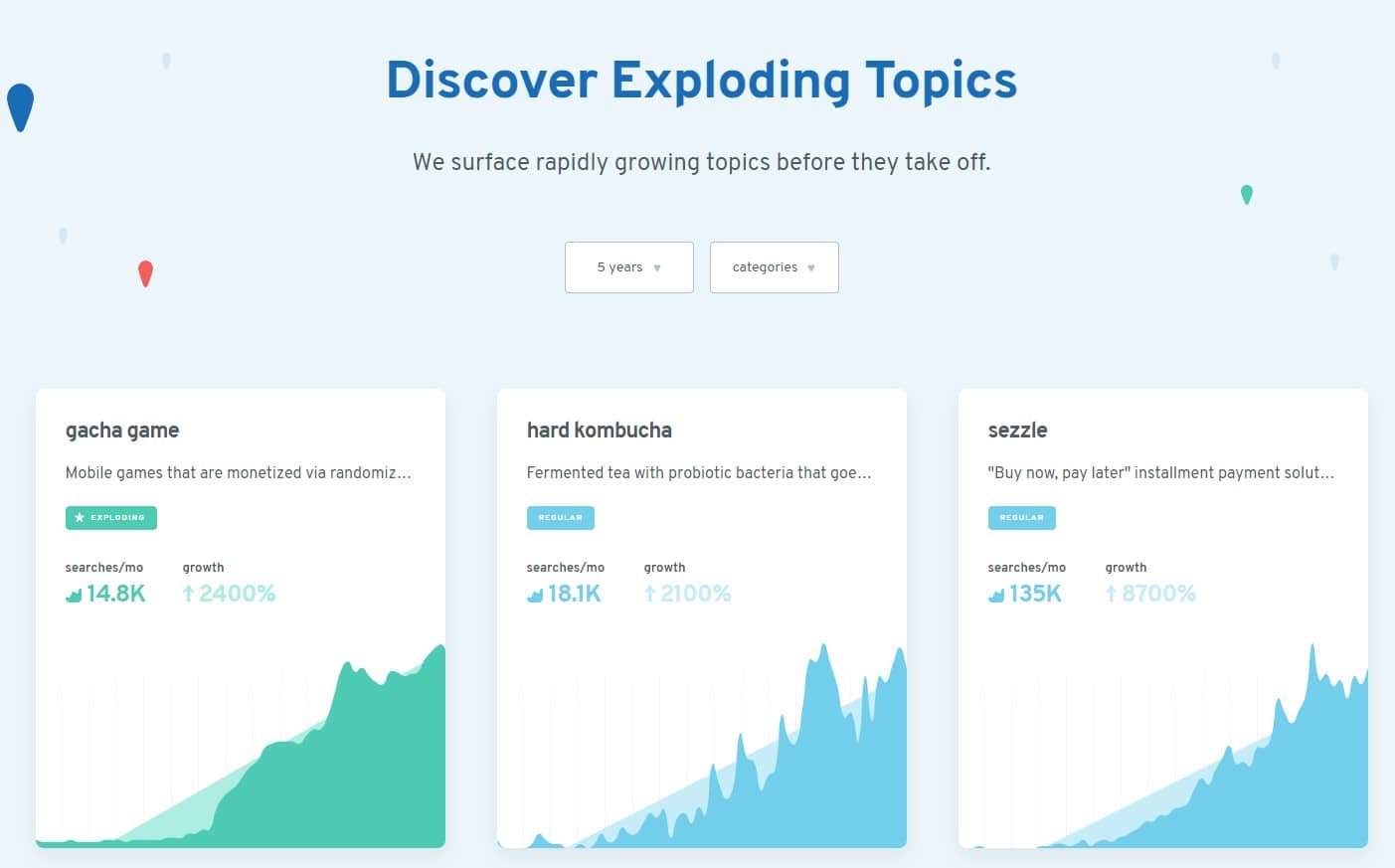
However, what’s cool about Exploding Topics is that you don’t have to type any keyword to see the trends, but they identify emerging trends at least 6 months before they take off and they show it to you.
And having early access to trending topics before anyone else gives you a huge opportunity to create content ahead of your competition and rank for high volume, low difficulty keywords, and drive tons of traffic to your site.
So let me show you how it works:
Exploding Topics has two versions, one version which is free and the other one is their Pro version.
The free version is in the form of a newsletter, where you subscribe and each Tuesday you will get a list of emerging topics.
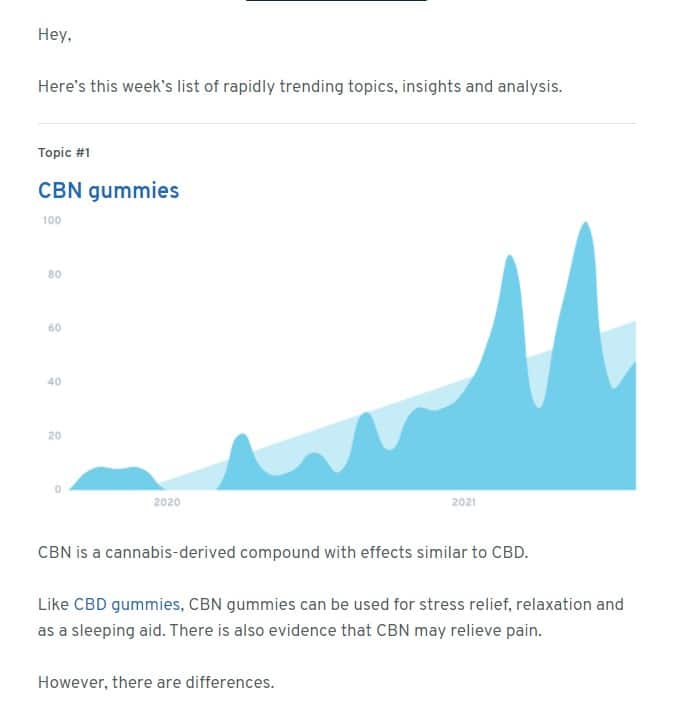
However, you can also browse exploding topics on their homepage, where you can also select the category, you are interested in and the time period.

And their PRO version goes even further and gives you early access to trends 6+ months before they share them anywhere else, with instant alerts, giving you more data and best trends suggestions and so much more.
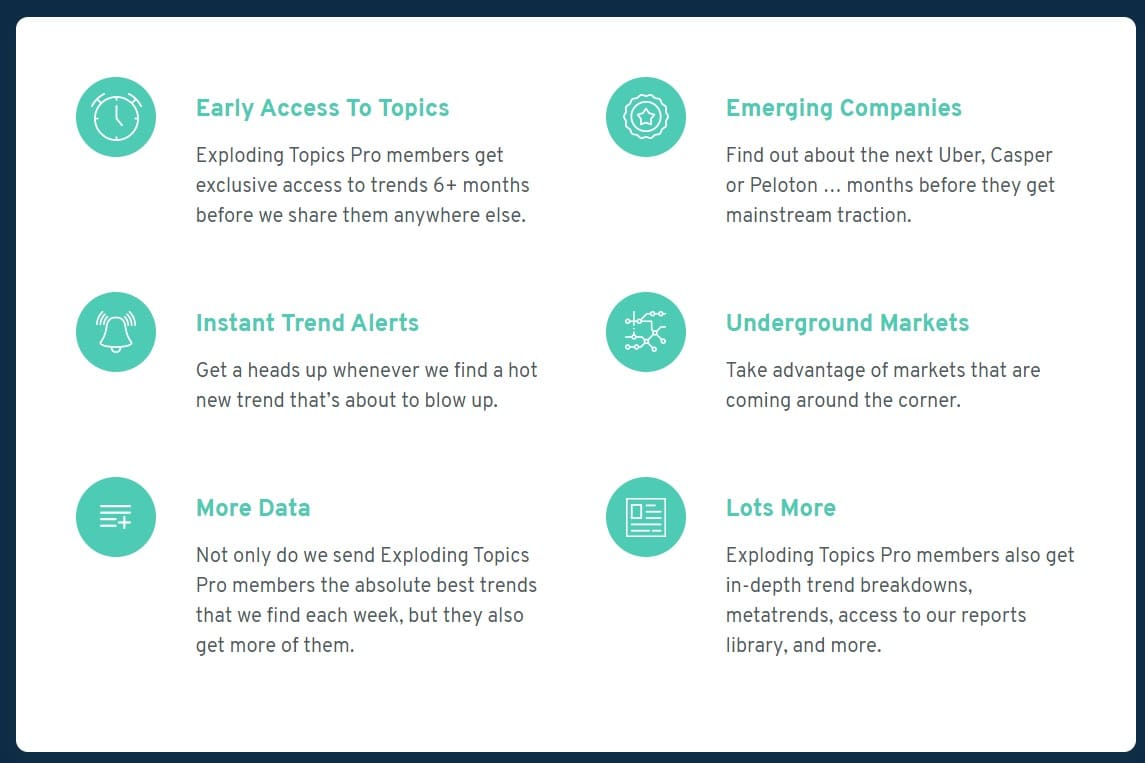
This is definitely a great keyword and long-tail keyword research technique to find interesting keywords. I would especially use this for affiliate sites as you can make so much money by ranking for newly trending products.
Technique #8: Check Out Google SERPs & Autosuggest
And the last place I want to mention where you can find long-tail keywords is on Google Search Engine Result Pages (SERPs).
This place can hide a lot of valuable keywords including long-tail keywords if you know where to look for them.
With that being said, let me show you a few places where you can find long-tail keywords in Google SERPs. Let’s say I want to target the keyword “digital marketing”.
First, you can use Google autosuggest. Just write down your head or body keyword and then keep changing letters behind or in front of the keyword to get different long-tail keywords suggestions.

Another place to find long-tail keywords on Google is to check the “People Also Ask” box in the search for your head or body keyword. Just pop in your keyword into Google and check the “People Also Ask” box.
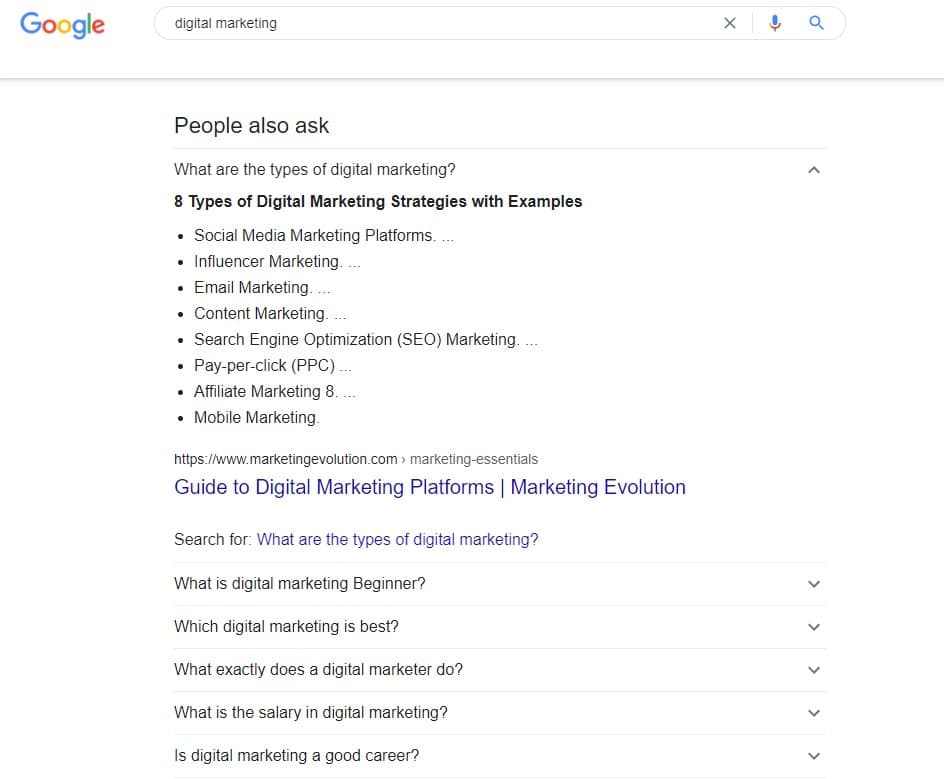
Another place to check for long-tail keywords is to check the bottom of the SERP page where you can get better long-tail keyword suggestions unlike from the “People Also Ask” box where you get more question-based keywords.

However, I do recommend you to still check out the search volume of the keywords you have found in Google SERPs using keyword research tools to find out if the keywords you have found have search demand and the potential to drive any meaningful traffic.

So, here you have all the techniques. Yes, there are even more ways to find long-tail keywords, but I believe this should be sufficient for you to find enough long-tail keywords to target.
Long-Tail Keywords Best Practices:
So, now when you know some of the best ways to find long-tail keywords, let me share with you some of the best practices of using long-tail keywords for your website and in your content.
Practice #1: Expand on Head or Body Keywords
The first practice I recommend you is to always expand on your targeted head and body keywords instead of just blindly targeting long-tail keywords.

This will help you to increase your topical relevance for your website and send Google a strong signal that your website is about this topic and that you are the subject matter expert.
And not only that, but your website will also rank for more related keywords, thus, you will improve your ranking for the overall website, drive better quality traffic to your website and if you are writing the content yourself, then you will learn even more about your subject as you will have to go deep to provide high-quality content with a satisfying amount of information.
However, you don’t need to stick with one head keyword as your niche or industry can have many relevant head and body keywords that you want to target.
For example, in my case, I want to target the head keyword “marketing”. However, because this is a big topic, I am first targeting body keywords like “email marketing” and “content marketing” to increase my topical relevance so later I can target the big head keyword “marketing”.
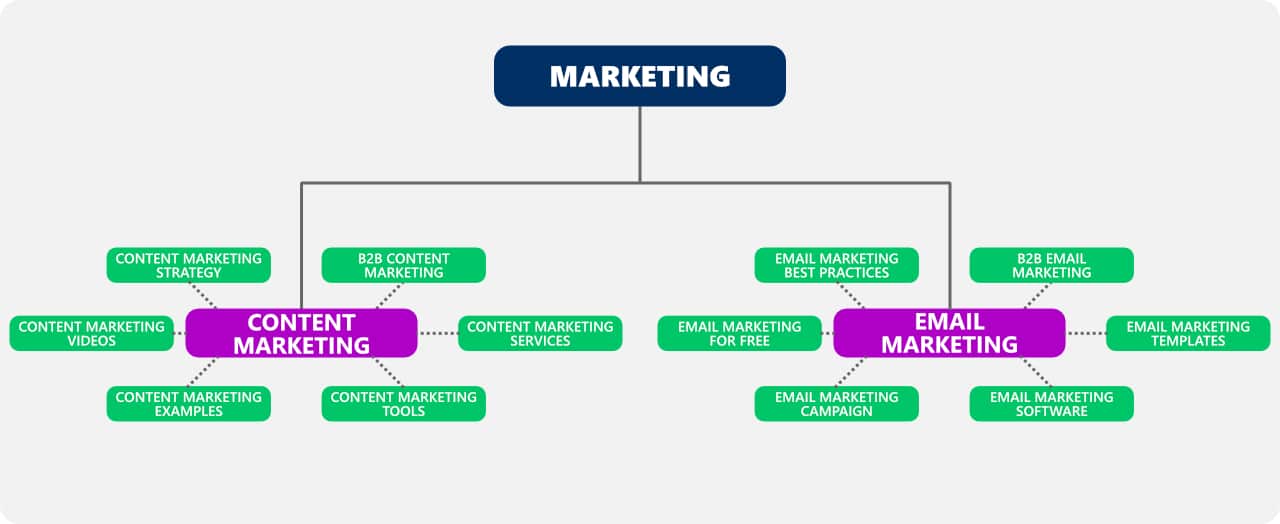
Another relevant head keyword is “SEO” to me, which I can target as well by creating content around body keywords like “on-page SEO” and “technical SEO”.

And then I can move to super relevant keywords like “keyword research” and “search engines”, to furthermore improve my semantic SEO and become one big source around everything there is to marketing and SEO.
Also, don’t forget to interconnect together all these relevant contents with head, body, and long-tail keywords with internal links just like you see the lines in this graphic.
Practice #2: Analyze Search Intent
The second practice that I recommend you should always follow is to analyze the search intent of your long-tail keyword or any keyword that you are going to target.
It will help you to determine what type of content you need to create to target keywords whether it is blog posts and what type of blog posts like:
- Listicle
- Ultimate Guide
- How-To or Step-By-Step
- Checklist
- Case Studies
- Infographics…
Or you need to create a product or category page to target the keyword.
So, to determine the search intent for my keyword I can check Google SERP and then mimic the type of content Google Suggest.
For example, if I want to find out the search intent for the keyword “b2b seo strategies” I can just pop the keyword into search. Or if you target a different location than you are in, you can use SE Ranking Google Location Changer to get the exact search results as those located there.

And based on the search results I am seeing I have to create the ultimate guide to B2B SEO, even though I would honestly think I would have to create blog posts with a list of B2B SEO strategies, and apparently, that’s wrong.

So, instead of reinventing the wheel and hoping it will work, It’s always recommended to follow the type of content Google suggests in SERPs as they spend billions of dollars to determine the searcher’s intent.
Practice #3: Recognize Targetable and Supporting Long-Tail Keywords
One of the big mistakes that I am seeing quite often that causes keyword cannibalization is not recognizing if the keyword can be targeted or is just supporting keywords to other articles.
Supporting keywords also called LSI keywords are keywords that do not have their own topic, but rather Google sees these keywords as relevant keywords that are part of a topic.
However, on the other side, targetable keywords are specifically targeting certain topics and therefore these keywords will be your main keywords, complimented with relevant supporting keywords to improve topical relevance and content ranking.
For example, keywords “b2b SEO” and “b2b SEO strategies” are part of the same topic, because as you can see Google ranks the same pages for both of these keywords.
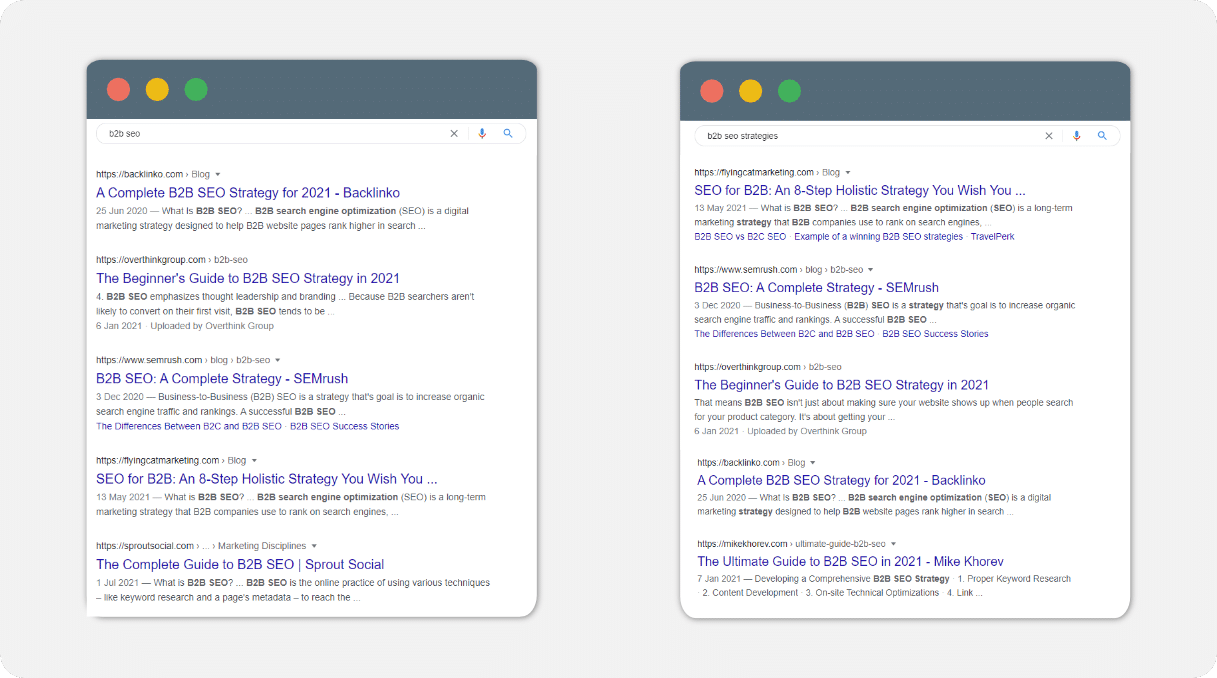
So, this means that these keywords fall under the same topic, and creating two different pages to target these keywords would result in keyword cannibalization, or two of my pages would compete for the same keywords which could result that one page being pushed out of the index.
So, whenever you intend to target a long-tail keyword, it’s important to recognize whether the keyword is the main keyword or a supporting/LSI keyword to avoid keyword cannibalization because this is happening a lot, especially with long-tail keywords.
Practice #4: Target Only One Main Long-Tail Keyword
Another important aspect when you are targeting the main long-tail keyword is to target only one main keyword per page.
Unlike LSI keywords where you can target as many keywords you want per page, you can target only one keyword when it comes to the main keyword per page.
For example, let’s take the keywords “best gaming laptop”, “best laptops for working from home” and “best laptop for gaming and work”.
Some would say, you could target these keywords with one big comprehensive page that offers the best laptops for different categories.

However, this rarely works and often people know what they are looking for which brings us back to the search intent. If a user is looking for “best gaming laptops” then they don’t want an additional list of “best laptops for working from home” which just would make them confused.
And I am not even talking about that it would be super hard to optimize this page for on-page SEO without confusing search engines and ending up not appearing for any of these long-tail keywords.

Therefore, it is recommended to target main keywords like this with separate pages so you can have a chance to rank high for all these search terms in SERPs and search engines to love you.

Practice #5: Optimize for Supporting Long-Tail Keywords
The next important practice when you are targeting long-tail keywords is to optimize also for supporting long-tail keywords or LSI long-tail keywords.
Search engines are getting smarter and keyword stuffing is no longer a strategy that you want to use to help search engines understand your content.
Instead, you want to optimize your page for one main keyword and as many supporting long-tail keywords as you can without sacrificing the quality of content.
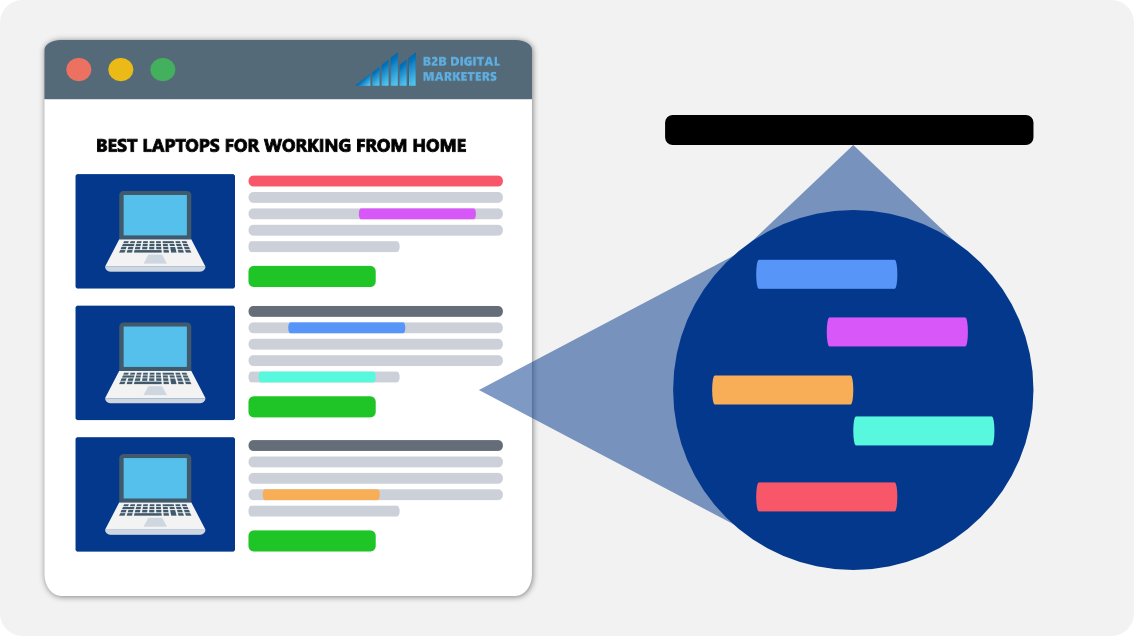
For example, if I am targeting the main long-tail keyword “best laptops for working from home” then including supporting keywords like “best laptops working from remotely“, “best business laptops for home”, or “laptop work from home” will help my content to rank better for my main long-tail keyword as well as for other relevant long-tail keywords, thus, I will maximize the potential of driving organic traffic from my content.

Therefore, make sure to search for LSI keywords for every of your main keyword and include them within your content.
Final Words
Searching for long-tail keywords can be one of the best ways to quickly increase organic traffic to your website despite your website has low domain authority.
However, as I said, you need to focus on your topic and target as many subtopics around your main topics to get the best results.
Just blindly targeting long-tail keywords will not work anymore and you need to focus on your website semantic SEO and who are your ideal customers.
Targeting those SEO keywords and long-tail keywords that your ideal customers are using will ultimately increase your lead generation and revenue.
Remember, organic traffic doesn’t pay the bills and you should focus on keywords with commercial value for your business.
Related Articles:
Also, check out our SEO hub page to find all our SEO resources.
Disclaimer
Some pictures are coming from Freepik and some of my links are affiliate links, which means if you purchase something, I might get some small commission as a reward for reference. Of course, I am actively using all these services and products, and I only affiliate products or services I have full trust in their quality!



